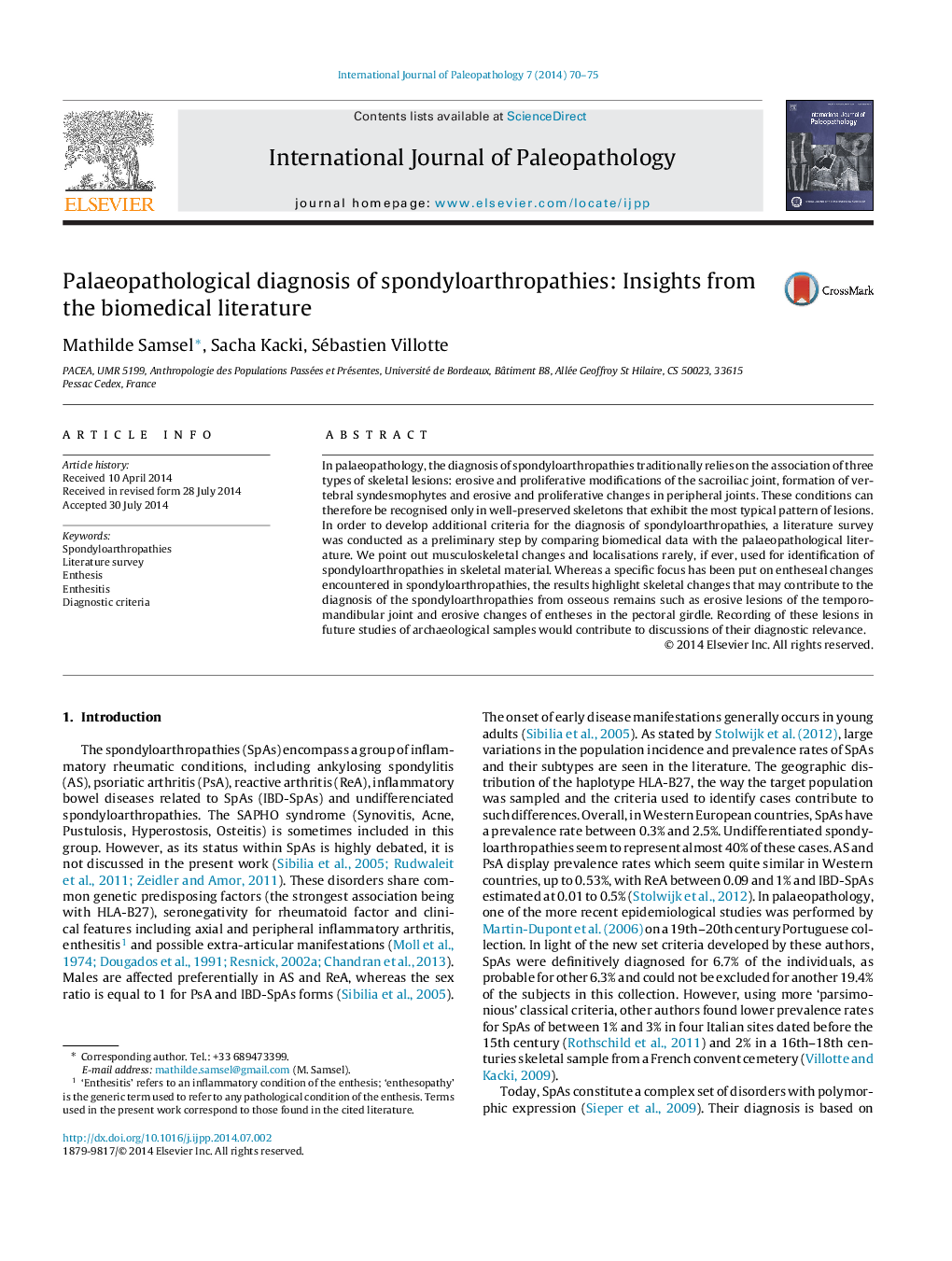| Article ID | Journal | Published Year | Pages | File Type |
|---|---|---|---|---|
| 6554857 | International Journal of Paleopathology | 2014 | 6 Pages |
Abstract
In palaeopathology, the diagnosis of spondyloarthropathies traditionally relies on the association of three types of skeletal lesions: erosive and proliferative modifications of the sacroiliac joint, formation of vertebral syndesmophytes and erosive and proliferative changes in peripheral joints. These conditions can therefore be recognised only in well-preserved skeletons that exhibit the most typical pattern of lesions. In order to develop additional criteria for the diagnosis of spondyloarthropathies, a literature survey was conducted as a preliminary step by comparing biomedical data with the palaeopathological literature. We point out musculoskeletal changes and localisations rarely, if ever, used for identification of spondyloarthropathies in skeletal material. Whereas a specific focus has been put on entheseal changes encountered in spondyloarthropathies, the results highlight skeletal changes that may contribute to the diagnosis of the spondyloarthropathies from osseous remains such as erosive lesions of the temporomandibular joint and erosive changes of entheses in the pectoral girdle. Recording of these lesions in future studies of archaeological samples would contribute to discussions of their diagnostic relevance.
Related Topics
Life Sciences
Biochemistry, Genetics and Molecular Biology
Physiology
Authors
Mathilde Samsel, Sacha Kacki, Sébastien Villotte,
